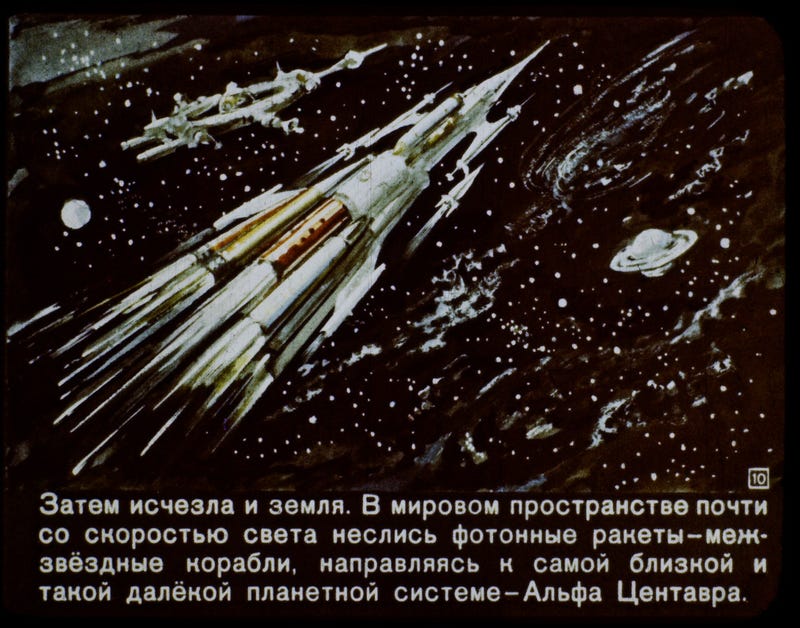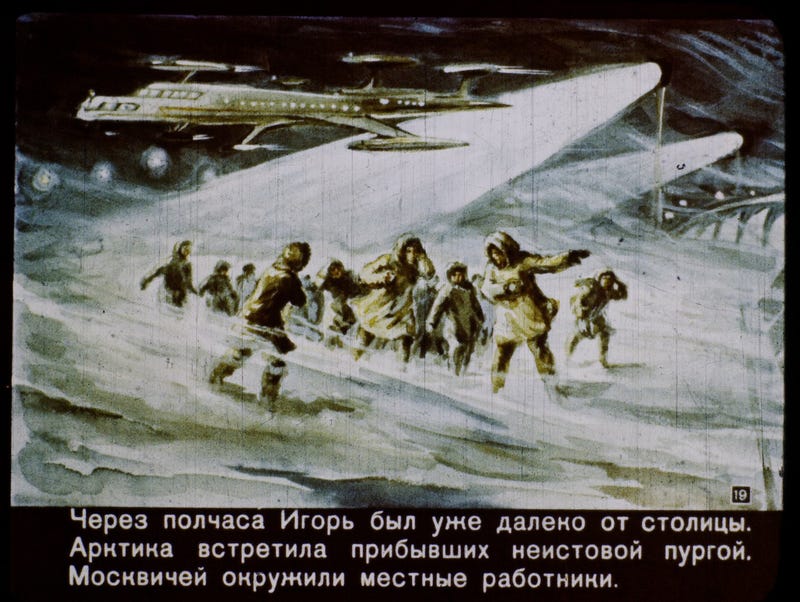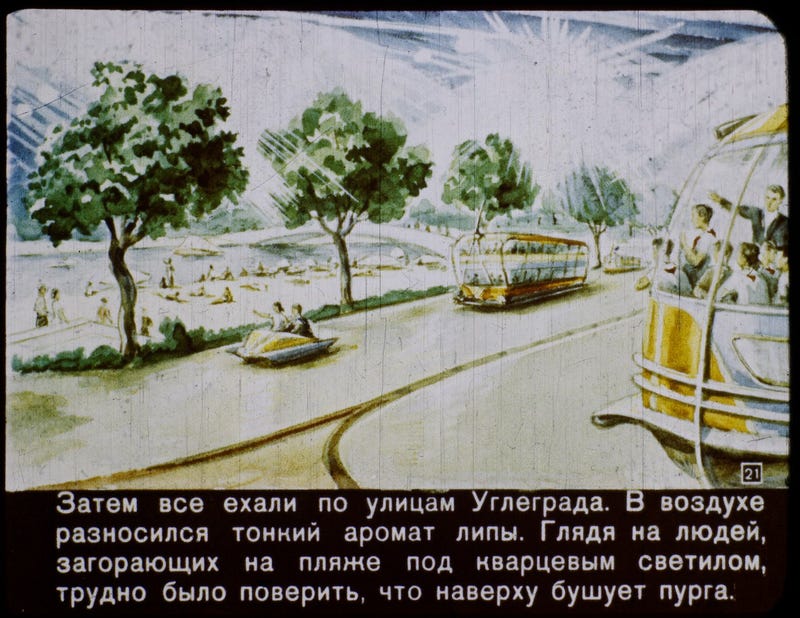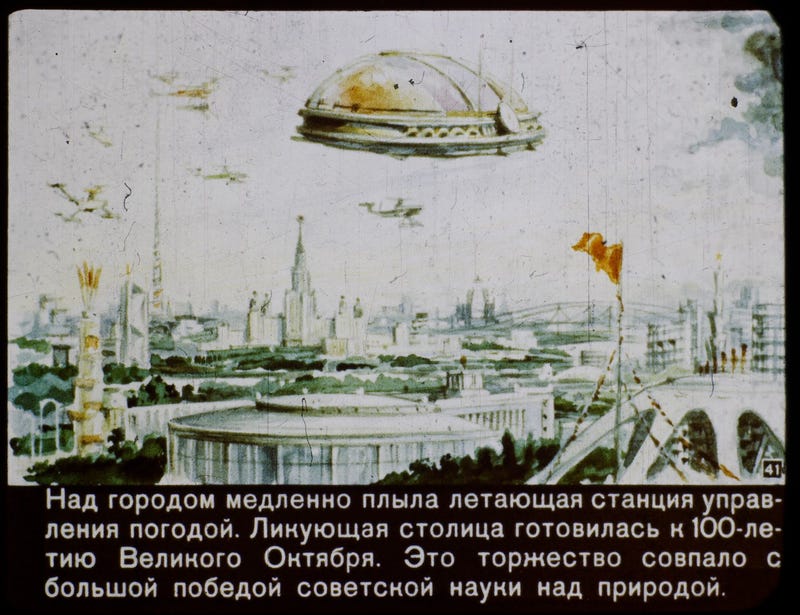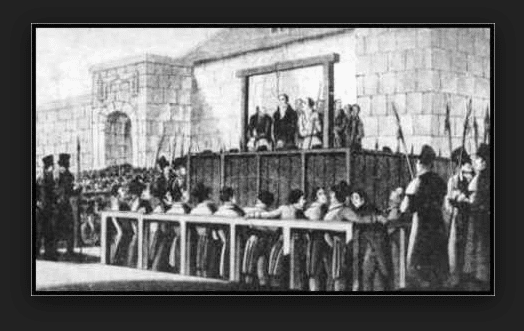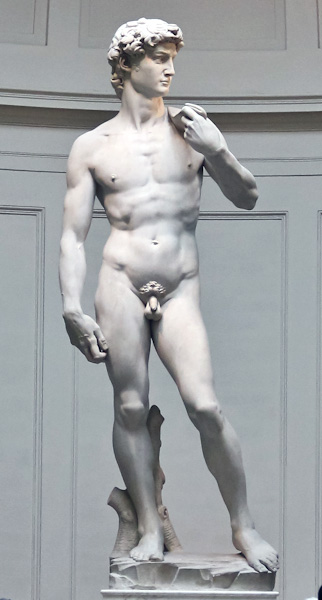Matt Novak from Paleofuture:
Matt Baillie from the Facebook group Soviet Visuals sent me a tip about the retro-futuristic filmstrip... the illustrations were created by L. Smekhov and written by V. Strukova and V. Shevchenko.
I’ve included select images from what appears to be the original source (Sergey Pozdnyakov) below, along with some of the translations from the Moscow Times.
From the Moscow Times:
Then in the film, the Earth itself disappears. In outer space, almost at the speed of light, photon interstellar rocketships set off for the nearest and faraway planetary system, Alpha Centauri.
Of course they've envisioned a way to deal with the harsh winters:
by building an underground paradise:
The Soviets have developed sophisticated weather control stations, which they occasionally have to use to save the world from the remnants of the dirty capitalists:
From the Moscow Times:
Meanwhile, back at the Central Institute for Weather Control, where Igor’s father works, there’s dire news. “We’ve just been informed,” the head meteorologist says, “that the last remaining imperialists, hiding on a remote island, have tested a banned meson weapon. During the test, there was an explosion of unprecedented strength, which destroyed the entire island and simultaneously created atmospheric disturbances around the planet.”
Someone put together a video version of the slide, with horrendous loud music - if you choose to watch it, I suggest that you turn the sound way down or mute it. There are no translations of the slides, but the Moscow Times has the whole set with translations.

